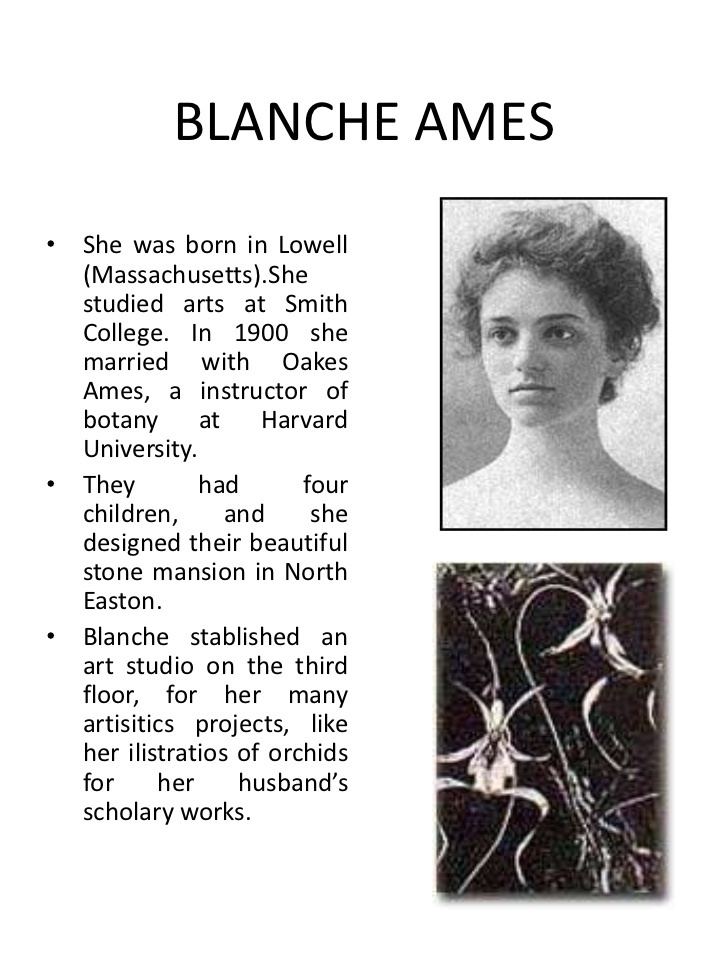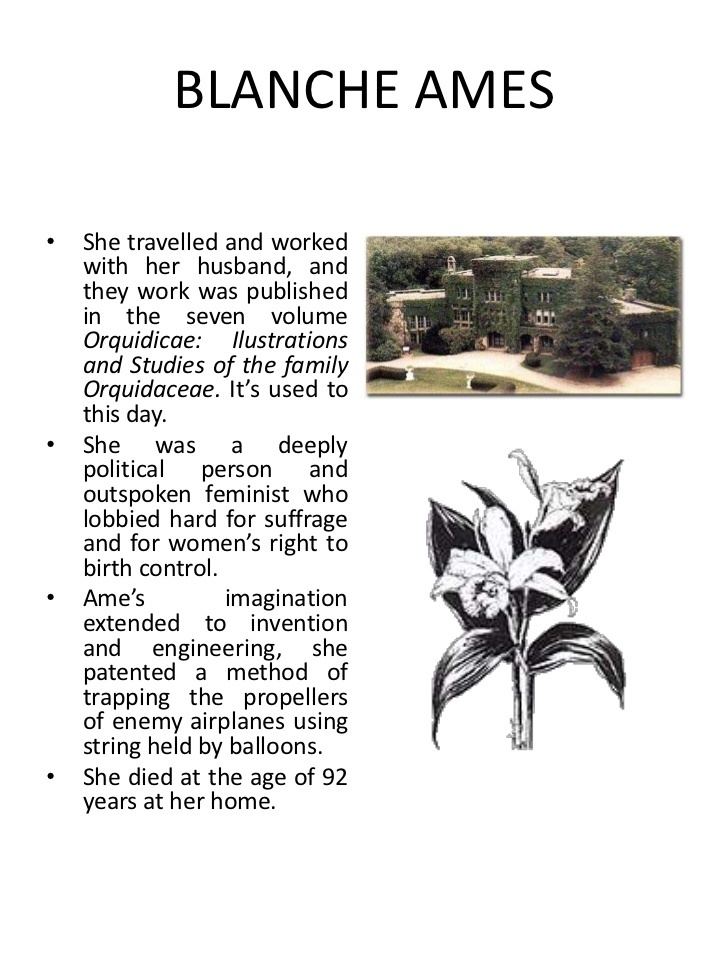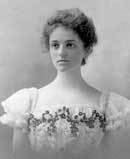Full Name Blanche Ames Role Artist Children Pauline Ames | Cause of death Stroke Name Blanche Ames | |
 | ||
Books Drawings of Florida Orchids Parents Adelbert Ames, Blanche Butler Ames Similar People | ||
Blanche Ames Ames (1878–1969) was an artist, political activist, inventor, writer, and prominent supporter of women's suffrage and birth control.
Contents

Personal life

Born Blanche Ames in Lowell, Massachusetts, Ames was the daughter of Civil War General and Mississippi Governor Adelbert Ames and Blanche Butler Ames. She was the sister of Adelbert Ames Jr., a prominent scientist.
Ames attended the Rogers Hall School in Lowell. She was later one of few women of her time to attend college, earning a B.A. in Art History and a diploma in Studio Art from Smith College in 1899. She was the president of her graduating class.
In 1900 she married Harvard University botany professor Oakes Ames (no relation) and took the married name Blanche Ames Ames. The Ameses had four children: Pauline (born 1901), Oliver (born 1903), Amyas (born 1906), and Evelyn (born 1910). Pauline grew up to write many books about her family, including "Oakes Ames, Jottings of a Harvard Botanist" (1979), and "The Plimpton Papers, Law and Diplomacy" (1985). One of Ames' grandchildren was George Ames Plimpton, famed sportswriter.
The Ames estate in North Easton, Massachusetts, called Borderland, was designed by Ames herself in the early 1900s. It is now Borderland State Park.
As an Artist
Ames was a talented artist in a variety of media. Her work included portraiture, primarily done in oil paint, botanical illustration, and political cartoons.
In 1902, she began illustrating Oakes Ames's botanical publications, including his seven volume treatise on orchids, which is still considered one of the best researched to this day. She first used watercolors for the orchid illustrations, but later switched to copperplate etching. She also published detailed pen and ink drawings of the orchids.
Ames's etchings are on display at the Metropolitan Museum of Art, and her oil painting can be seen at Harvard, Dartmouth, and Columbia University.
Women's Rights Work
Ames held a lifelong passion for women's rights. From 1915 to 1918 she was Treasurer of the Massachusetts Woman Suffrage League. In 1916 she helped found the Birth Control League of Massachusetts, an affiliate of Margaret Sanger's group, and served as first President. In this role Ames helped to form The Doctors Bill to Clarify the Law, which regulated the ability of doctors to provide birth control counseling to married women with health problems, and later helped establish universal access to birth control. Ames also served as a board member and later as President of the New England Hospital for Women and Children in Boston.
Inventions
Ames held patients for inventions which included a hexagonal lumber cutter and a method for entrapping enemy aircraft.
The Ames Color System
In the early 1910s Ames' brother, Adelbert Ames, Jr., a scientist particularly interested in vision, moved into her studio for painting lessons. With her brother's influence Ames began the development a color notation system more extensive than the Munsell color system. Together the two created coded color swatches which corresponded to particular tubes of paint. The artist would use these swatches to select the most realistic colors and the codes would be mapped out on a drawing before the paint was applied.
